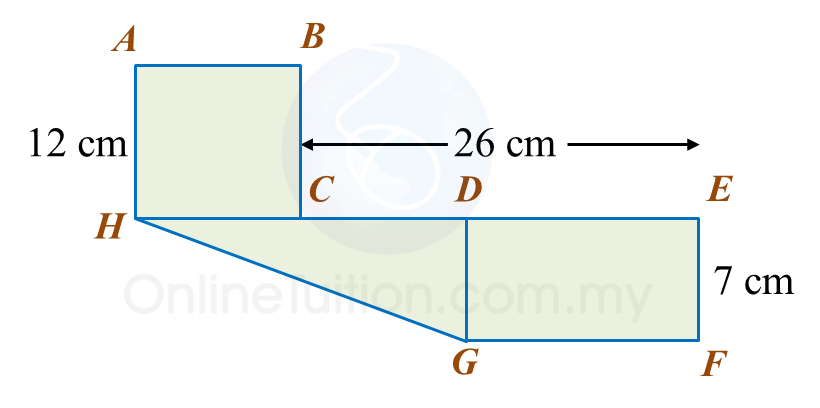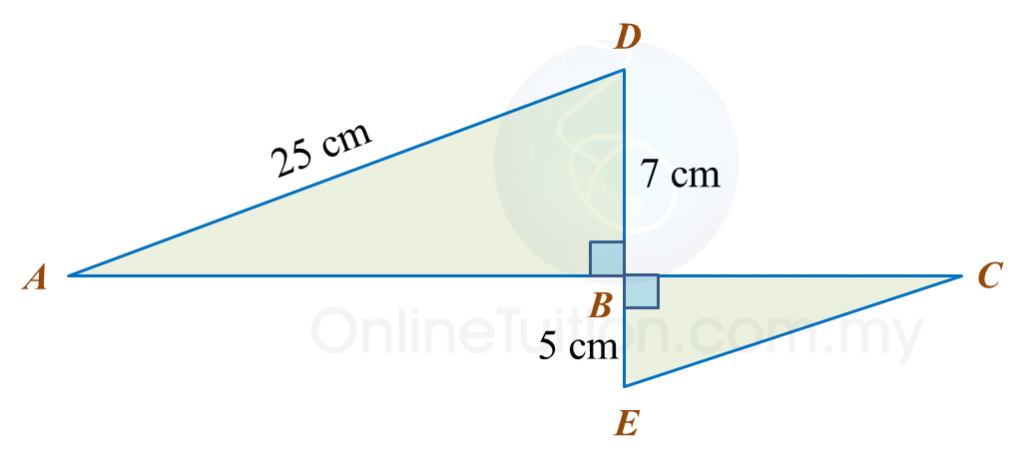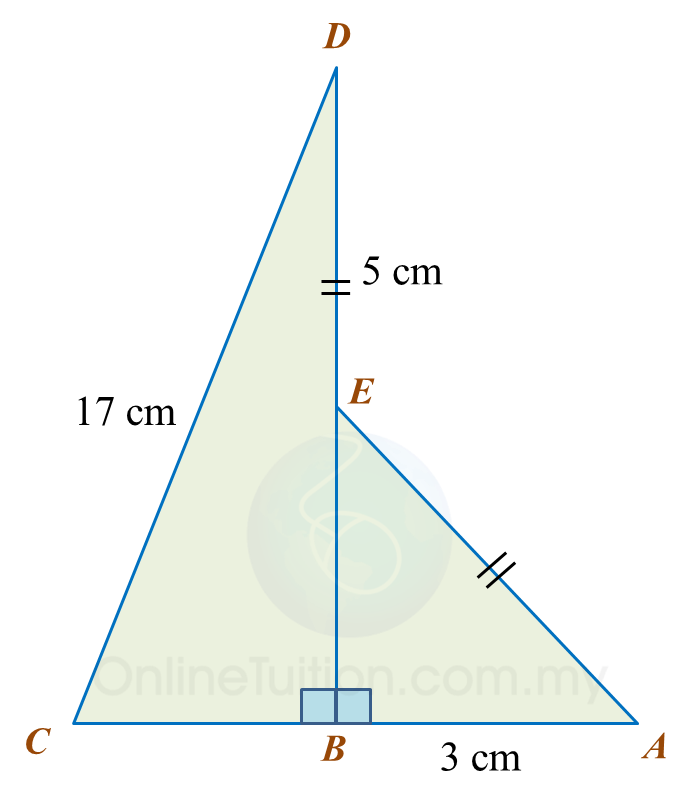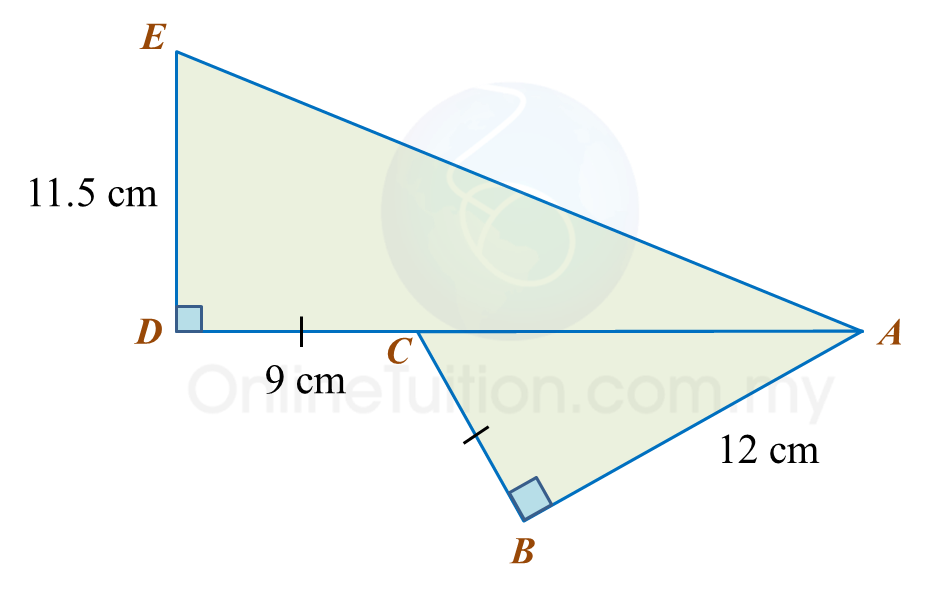Question 6:
In diagram below, ABCH is a square and DEFG is a rectangle. HCDE is a straight line and HC = CD.

Find the perimeter, in cm, of the whole diagram.
Solution:
In diagram below, ABCH is a square and DEFG is a rectangle. HCDE is a straight line and HC = CD.

Find the perimeter, in cm, of the whole diagram.
Solution:
Question 7:
In the diagram, ABC and EFD are right-angled triangles.

Calculate the perimeter, in cm, of the shaded region.
Solution:
In the diagram, ABC and EFD are right-angled triangles.

Calculate the perimeter, in cm, of the shaded region.
Solution:
Question 8:
In the diagram, ABD and BCE are right-angled triangles. ABC and DBE are straight lines. The length of AB is twice the length of BC.

Calculate the length, in cm, of CE.
Solution:
In the diagram, ABD and BCE are right-angled triangles. ABC and DBE are straight lines. The length of AB is twice the length of BC.

Calculate the length, in cm, of CE.
Solution:
Question 9:
Diagram below shows two right-angled triangles, ABE and CBD. BED is a straight line.
 Find the length, in cm, of BC. Round off the answer to two decimal places.
Find the length, in cm, of BC. Round off the answer to two decimal places.
Solution:
Diagram below shows two right-angled triangles, ABE and CBD. BED is a straight line.
 Find the length, in cm, of BC. Round off the answer to two decimal places.
Find the length, in cm, of BC. Round off the answer to two decimal places.Solution:
Question 10:
Diagram below shows two right-angled triangles, ABC and ADE. ACD is a straight line.
 Find the length, in cm, of AE. Round off the answer to one decimal places.
Find the length, in cm, of AE. Round off the answer to one decimal places.
Solution:
Diagram below shows two right-angled triangles, ABC and ADE. ACD is a straight line.
 Find the length, in cm, of AE. Round off the answer to one decimal places.
Find the length, in cm, of AE. Round off the answer to one decimal places.Solution: